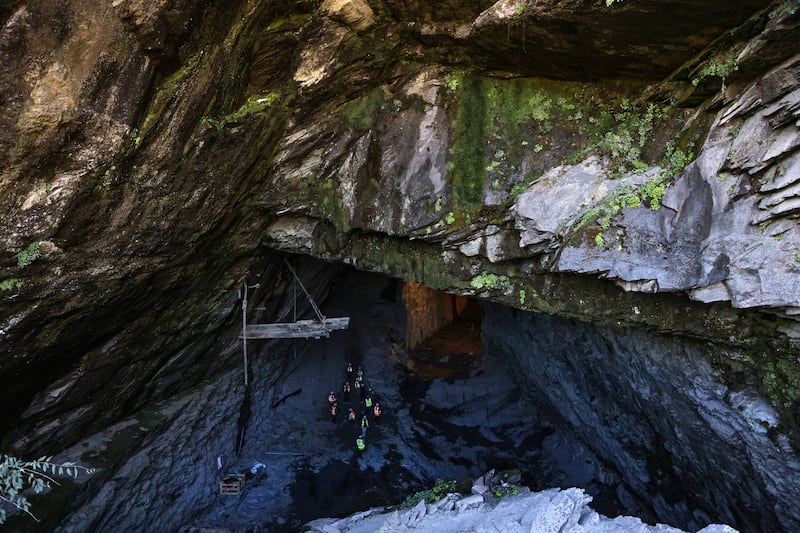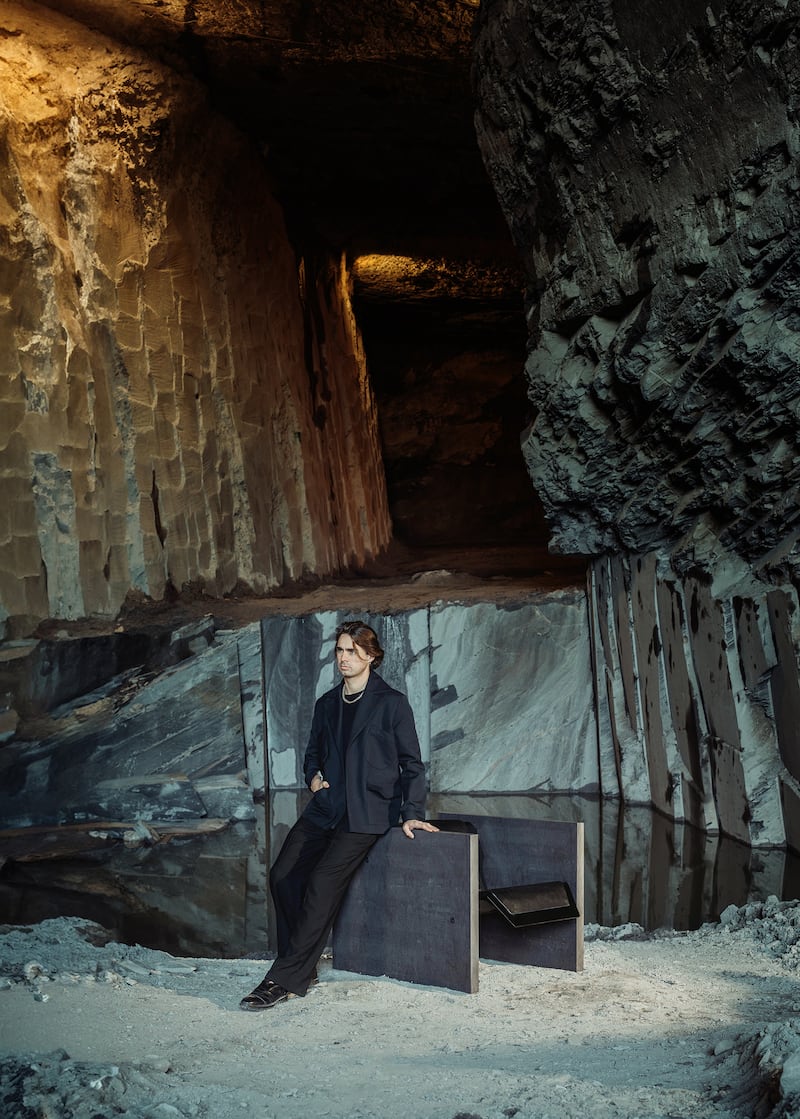Architect Edwyn James Hickey remembers his first sight of Valentia Island two years ago, when he crossed the wooden bridge from Portmagee, and thought how mysterious and beautiful it seemed.
A graduate of the Dublin School of Architecture at TU Dublin, and founder of a visualisation and design practice called Magnaparte, he had come to provide visuals for the redevelopment of an old Napoleonic watch tower on Bray Head for Kerry County Council. He became fascinated instead, by Ireland’s oldest slate quarry, and discovered its monumental impact on architectural history.
“It is another world, and the textures and colours of the quarry are amazing – slate is five time stronger than marble and is formed in layers over millions of years,” he explains. The experience led him to design and make furniture from slate, working with the men in the quarry who cut the stone with large machines and diamond wire rope saws.

Valentia Slate, commercially quarried since the early 1800s, once employed over 450 people and provided slates for the Paris Opera House, Westminster Abbey and St Paul’s Cathedral. Its strong slabs of stone made it useful for both construction and domestic purposes, as well as paving and roof slates. After a large rockfall in 1911, the quarry closed, and remained inactive for most of the 20th century. Efforts to reopen it in 1998 faltered, but, in 2019 it was bought by Killarney geologist Dr Aidan Forde, who has ambitious plans for its future.
READ MORE
In April this year, Valentia Slate was given global designation as a heritage stone, like Connemara marble. It was used most recently on the roof of The Rubrics building in Trinity College Dublin.
An award winning architect, originally from Limerick and now based in Ashford, Co Wicklow, he is well used to designing innovative furniture. Two of his pieces were chosen to represent Ireland at the Maison&Objets trade show in Paris in 2020, but it was cancelled because of the Covid-19 pandemic.
[ How to make furniture: It’s important to have a tidy mindOpens in new window ]

Supported by Forde, who is “open to people coming in with new ideas”, James’ Valentia chair (which weighs 210kg), uses the slate on two side pieces, and the seat is made of highly engineered and folded steel with luxury black German leather upholstery.
“My main goal is that it is very comfortable, but with a strong design aesthetic”, he says. He has also designed a stool made with slate and a bench capable of seating six people, with one piece of slate based on an old photo taken in 1880 in Tralee. “I want to champion Valentia Slate and raise awareness of its history. With a chair like this, you have an artisan history of Ireland – it is a storytelling artefact”.
He is currently working on restoring an old blacksmith’s house in Meath, and has a model in the Royal Hibernian Academy for another project – a new Blackrock Baths, for the south county Dublin village. But sin scéal eile.
The Valentia chair is priced at €7,380 and the stool at €700. For further information see edwynjames.ie
- Sign up for push alerts and have the best news, analysis and comment delivered directly to your phone
- Join The Irish Times on WhatsApp and stay up to date
- Listen to our Inside Politics podcast for the best political chat and analysis













